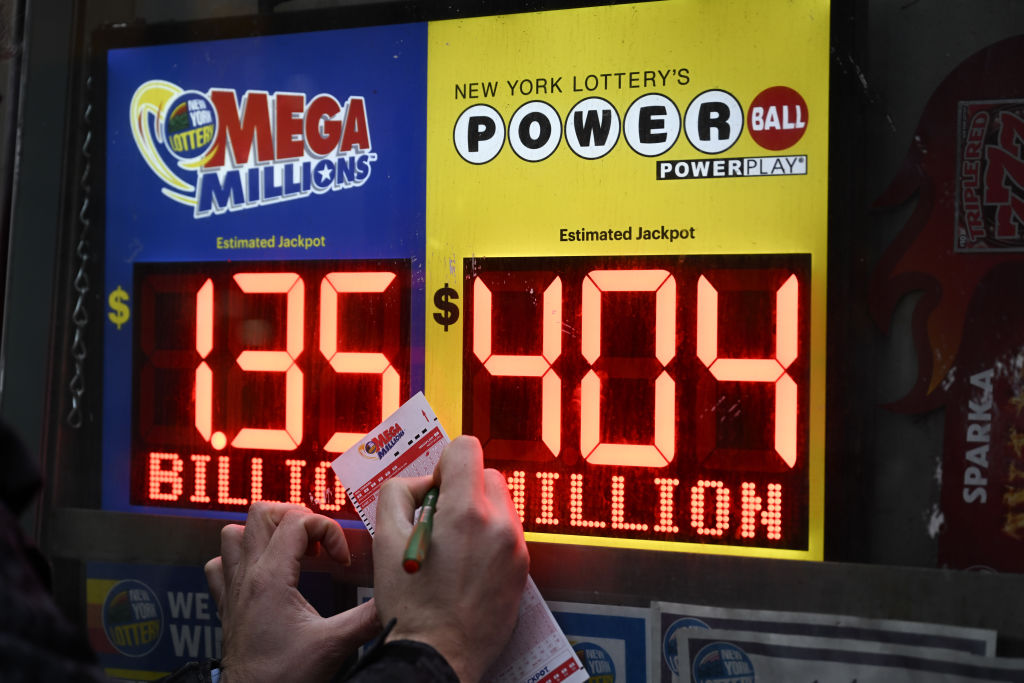
With a chart-topping $1.35 billion Mega Millions jackpot drawing scheduled for Friday night, the massively profitable state-run lottery continues to enthrall Americans with its bi-weekly drawings and larger-than-life sums of money.
If one player strikes luck on the ominous Friday the 13th drawing, it would be the second-largest win in Mega Millions history since the October 2018 jackpot that doled out $1.54 billion to a very fortunate South Carolinian. Powerball saw its largest jackpot in history last year when a winner from California claimed $2.04 billion on November 8.
Americans spent nearly $105.3 billion on lottery tickets in 2021, a colossal figure compared to jackpot winnings, according to research. Although many of the sales go to other prize tiers, the real winners appear to be the states.
Experts and avid lottery players tend to agree that whether it’s Mega Millions, Powerball or even scratch-offs, state-run lotteries have the game formulas planned out to a tee, through a series of meticulously designed strategies that rake in maximum profits.
Giant jackpots are no coincidence. Lottery planners understand that to garner more interest—and therefore reap more profit—all it takes is an enormous jackpot to send people into a ticket-buying frenzy.
“I think what the Lottery Commission learned is that people don’t pay too much attention to the probability of winning, but they get excited when the jackpot gets very large. So when they made changes in 2015, the chances of winning on each draw got smaller, which means we saw more rollovers,” Suk Hun Lee, a finance professor at Loyola University with a principal research area in gambling, tells TIME. “As the jackpot increases, people get excited and more and more people participate in the jackpot.”
Greatest profits
John Spry, a professor of finance at St. Thomas University, who studies the economics of state-run lotteries, has researched the evolution of lotteries like the Mega Millions, analyzing the games’ radical evolutions since 2010. “One of the things that I’m sure the lottery officials have done that I’ve looked at is research how redesigning a game affects sales,” he tells TIME. “As they redesigned, you see they get these large jackpots more frequently.”
In a recent study titled, “The Sales Effects of Powerball and Mega Millions Game Redesign,” that Spry co-authored with his colleague, Kathryn Combs, the team analyzed drawings, winnings, revenue and redesigns from 2010 – 2019. The research showed huge increases over the years in sales, jackpot amounts and subsequently, profits for the states.
Forty five states, plus Washington D.C. and the U.S. Virgin Islands, sell Mega Millions tickets and state governments take in about a third of jackpot sales, allocating the funds as they see fit.
Lee explains that since the goal is to sell the most tickets and giant jackpots are what draw people in, it doesn’t matter that the lottery planners give away so much money in frequent, huge jackpots. The states are still earning more. The chance of winning the Powerball jackpot is one in 297 million and one in 302 million for the Mega Millions jackpot.
“When you get the really large jackpots sometimes people call it ‘lotto fever,’ and people that normally don’t play, play the lotto at a much higher rate,” Spry says. “For this Friday’s drawing, it should be one of the most successful periods of lottery sales for Mega Millions.”
Mega Millions did not respond to TIME’s request for comment.
Designing the game
The odds of winning any lottery are the same, despite which numbers you choose, what day you buy a ticket, if you’re a frequent player or not and so on. The probability of the lottery makes it an even playing field, where the only way to up your chances of winning is to buy more tickets for each drawing. However, probability experts still suggest that you shouldn’t count on winning and to think hard about the investment before throwing your life savings in.
In 2012, Powerball increased ticket prices from $1 to $2, with Mega Millions following suit in 2017. The games also decreased the number selection pool, for example, Mega Millions went from 1 – 70, as opposed to the former 1 – 75. With drawings every Tuesday and Friday from Atlanta, Georgia, the drawing frequency hasn’t gone up, but the turnaround time between winners has.
“In one month or six weeks we [tend to have] a winner so I think it’s a little trick that the lottery games industry plays in order to have more jackpot winners more frequently,” Lee says.
Spry also explains that part of the lottery design is that it’s not like a raffle where there’s only one winner. “You could pick numbers and I could pick numbers and they’re the same lucky numbers. Then if we win the jackpot, we would split,” he says.
The other major tenet of jackpot lotteries that lets them thrive is that they exist without any competition. “The lottery is a monopoly and nobody is allowed to sell these products in that state, except for the authorized lottery of that state,” Spry adds.
Lee adds that although picking up your weekly lotto ticket can be a fun pastime for some, it’s important to remember the social repercussions that can have, especially when lottery participation is concentrated among low-income and marginalized communities who stand to lose the most.
“[If] people in a low-income family with the minimum cash available use the lottery…, I think that we have some social issues that we need to be mindful of,” he says.
More Must-Reads from TIME
- Donald Trump Is TIME's 2024 Person of the Year
- Why We Chose Trump as Person of the Year
- Is Intermittent Fasting Good or Bad for You?
- The 100 Must-Read Books of 2024
- The 20 Best Christmas TV Episodes
- Column: If Optimism Feels Ridiculous Now, Try Hope
- The Future of Climate Action Is Trade Policy
- Merle Bombardieri Is Helping People Make the Baby Decision
Contact us at letters@time.com